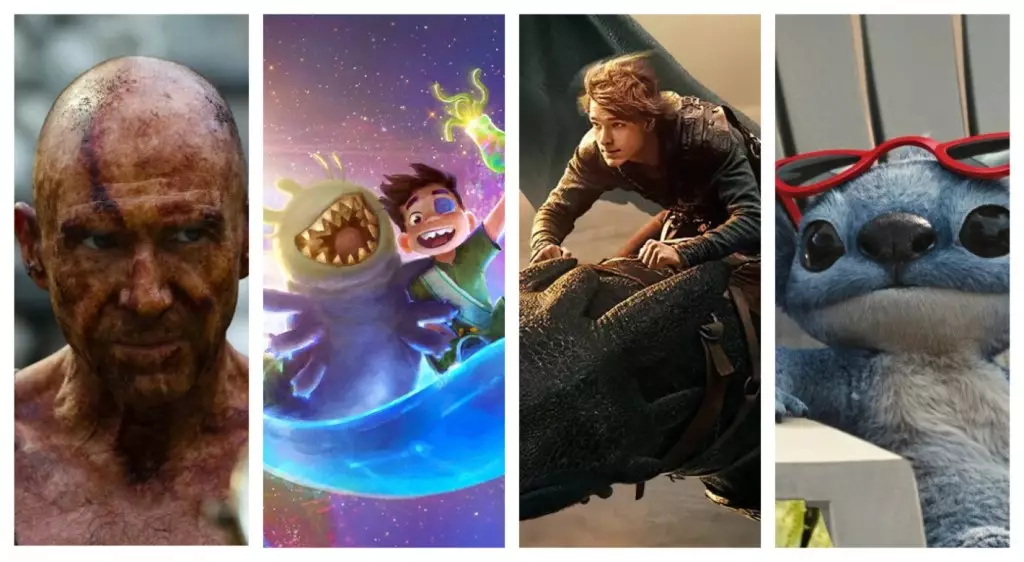In an era defined by cinematic reinventions and the quest for originality, Danny Boyle’s highly anticipated film, *28 Years Later*, has emerged as a trailblazer, raking in an estimated $60 million globally during its opening weekend. The breakdown, with an even distribution of $30 million from both domestic and international markets, signifies not just a financial success, but also an evolution within the horror genre—a genre increasingly dominated by predictable tropes and formulaic treatments. This R-rated offering from Sony exemplifies how an auteur-driven narrative can resonate with audiences, establishing a new benchmark for cinematic horror.
What sets *28 Years Later* apart is not simply its box office figures, which surpass pre-release expectations; it is also the film’s critical reception and connection with viewers across diverse demographics. The film’s robust performance in 59 international territories, notably its 76% higher opening than similar genre offerings like *Sinners*, speaks volumes about contemporary audience tastes and engagement with more sophisticated storytelling.
Heatwave and Horror: The UK’s Enthusiastic Reception
In a notably competitive release window, *28 Years Later* managed to secure the number one spot at the UK box office with a commendable $6.4 million debut. This success can be attributed to Britain’s unique relationship with horror as a cultural staple—a tradition that blends historical context with modern storytelling. The film’s ability to captivate audiences transcended borders, as evidenced by Mexico’s strong $2.7 million opening, and the Middle East’s $1.8 million contribution to its international haul. Such figures reveal a collective yearning for narratives that evoke emotional responses, not just mere frights; a trend that seems to be shaping the future of horror films.
Furthermore, countries like Australia ($1.7 million), Korea ($1.5 million), and Germany ($1.3 million) contributed to this momentum, displaying the film’s wide-reaching appeal. The significance of these numbers should not be underestimated; they reflect a market ready to embrace innovative storytelling—successfully intertwining political undercurrents, social commentary, and visceral suspense.
The Underperformance of Elio: An Animated Disconnect
In stark contrast, Pixar’s *Elio* has opened to much less fanfare, managing only $35 million globally, with a disappointing $14 million from international markets. This eyebrow-raising figure, well below forecasts, suggests a disconnect that demands analysis. Despite positive audience and social media reactions, *Elio* failed to capitalize on vital release timing as schools in many regions have yet to break for summer. Such strategic miscalculations can significantly impact a film’s opening, echoing the struggles faced by *Elemental* during its run last year.
The experience of *Elio* underscores the harsh realities of modern box office dynamics, where individual films must not only compete for attentiveness in theaters but also understand the unique demands inherent to their target demographic. The competitive landscape is compounded by the looming entry of animated films like *Smurfs* mid-July, further tightening the timeline for *Elio* to develop its franchise potential.
Franchise Foundations: The Power of Originality in Animation
Disney is indeed at a crucial juncture in determining which of its animated properties will foster long-term franchise potential. While *Elemental*, *Encanto*, and now *Elio* are part of this landscape, the critical differentiation lies in execution and audience connection. With *Elio’s* strategy appearing less cohesive than expected, Disney may need to rethink their approach to effectively capture the imagination of children and families alike.
Surprisingly, international markets have shown remarkable resilience for established franchises. Notably, Universal’s *How to Train Your Dragon* not only dominated this weekend’s box office scene but also demonstrated exceptional legs with a global total of $358.2 million, showcasing the strength of well-crafted franchises in sustaining viewer interest over multiple weeks. As audiences increasingly gravitate toward familiar narratives that evolve rather than regress, the opportunity for franchises built upon strong storytelling remains significant.
The filmmakers behind *28 Years Later* have struck a chord in a saturated market, bridging artistry with popular appeal while reconfiguring the landscape of horror films and setting a powerful example for forthcoming cinematic endeavors. Their triumph showcases the industry’s need for innovative narratives that challenge existing frameworks, ensuring that storytelling continues to thrive in an ever-evolving cultural context.
